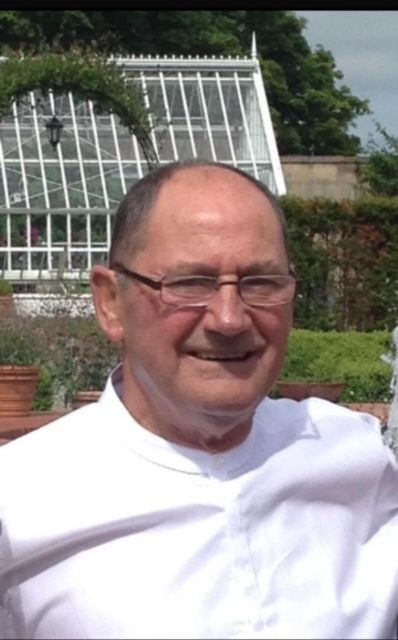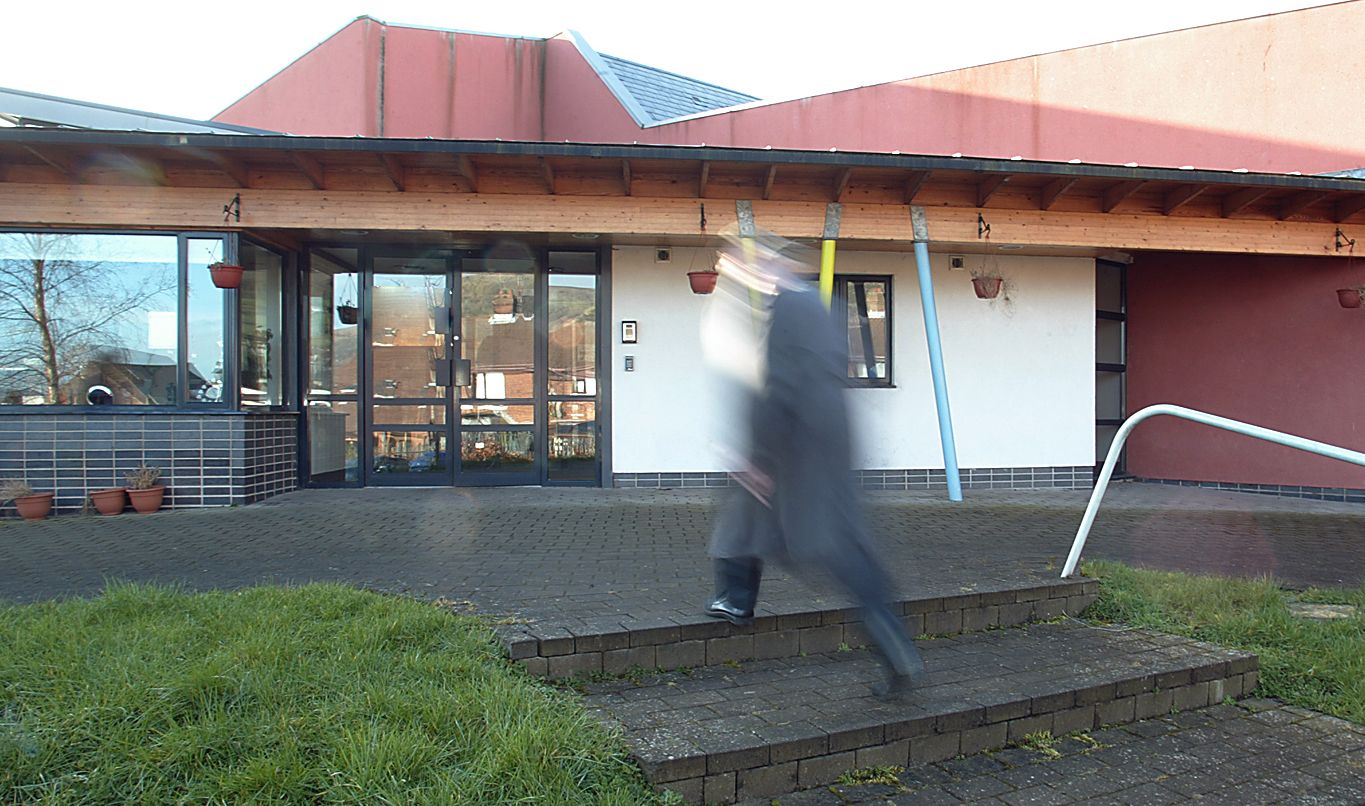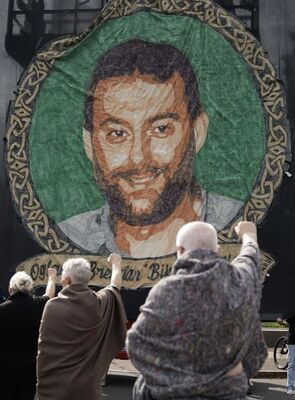ON Saturday night I was privileged to attend the oíche mhór Ghlór na Móna in Belfast’s City Hall. The event was to celebrate twenty years of this amazing Irish language initiative made up mostly of and aimed at young people in the Upper Springfield area. It was a great night. Packed out with young Gaeilgeoirí. But there was also a good clatter of veteran campaigners. The pioneers who gave us the Shaws Road Gaeltacht, An Chultúrlann, Lá, Raidió Fáilte, An Meánscoil (now Coláiste Feirste), an Cheathrú Ghaeltachta and many other wonderful cultural and communal creations, including a thriving Irish medium education sector.
It was right that such a multi-generational gathering was assembled in the City Hall and the strength of the language movement was evident, but the buzz in the hall came from the brilliant, positive, multi-talented young people – mainly ‘graduates’ of Glór na Móna.
This was their night.
Maírtín Keenan’s video – youtube.be/PQ41LfedLAA – set the tone with its look back on twenty years of cultural struggle in the Murph, Turf and other Upper Springfield communities, including a terrific interview with the late Matt Lundy.
Then the young leaders of Glór na Móna came to the podium to uplift us with speeches and poetry. Go hiontach ar fad. Looking back. But all looking forward with confidence to the future.
Conchúr Ó Muadaigh recalled his first encounter with Glór na Móna. He went there as a sixth-year student at Coláiste Feirste, around 2008. I think that was in The Base at the Top of the Rock behind the shops. It was a space for young people, mostly from Ballymurphy, to gather.
Conchúr recalled: “In 2009, shocraigh muid Cumann Óige lán-Ghaeilge a bhunú inár gceantar. Léim muid isteach le beocht agus tiomantas, ag iarraidh spás sábháilte a chruthú do dhaoine óga a bhfuil Gaeilge acu lasmuigh den scoil.”
He added: “I was surrounded by a community rich in history. The people who established Gaeltacht Bothair Seoige, Bunscoil Phobal Feirste, An Chultúrlann and Coláiste Feirste, and those in the H-Blocks who learned Irish and shared it with the world. Their legacy inspired me to contribute to the modern revival, and Glór na Móna became my vehicle.
“In 2016, d’oscail muid Gael-Ionad Mhic Goill, bhí dhá fheachtas óige againn agus dhá bua, bhí an An Dream Dearg, Laochra Loch Lao, Féile na Carraige, Féile na gCloigíní Gorma. Thug mise faoi deara go raibh mé i lár athbheochan teanga bhríomhar. Má bhí deis agat, thapaigh tú é. Ba shimplí é, ach cumhachtach: Ná habair é, déan é.
“Looking back at those early days in The Base, before Gael Ionad Mhic Ghoill and An Dream Dearg. we dreamt of these moments. We started with protests of just ten people, and now we’re a social movement, shaking the foundations of the northern state.
“Three days following An Lá Dearg, the British government finally enacted Irish language legislation after decades of dedicated campaigning.”
Maith sibh, a chairde. Thank you to everyone in Glór Na Móna. Thank you to all our Irish language leaders. Glór na Móna Abú!
Leanaigí ar aghaidh.
Protest and book launch
THE threat by English developer Hammerson to demolish much of the 1916 Moore Street Battlefield site in Dublin was given the green light by An Bord Pleanála several weeks ago. The Moore Street Preservation Trust, which is led by the relatives of the signatories to the 1916 Proclamation, is currently discussing the legal options available to it to challenge this decision.

In the meantime, the Trust has decided to hold a protest rally in Moore Street on Sunday, November 10 at 1pm. This will provide an opportunity for the public to express its anger at the grave threat to this historic quarter and to demand that Darragh O'Brien, the Fianna Fáil Minister for Housing, Local Government and Heritage, use the powers available to him to block the Hammerson proposal. The Trust will also highlight its alternative plan for a cultural and historic quarter to protect the buildings and landscape which formed the backdrop to the Easter 1916 Rising.
In addition, on Thursday, October 31 the Trust will be publishing Ray Bateson’s excellent book. ‘The Battle of Moore Street – 28-29 April, 1916’, which draws on the recollections and words of those who were there, and retells the story of those two desperate days as the GPO garrison sought to break out of the encirclement imposed by the British Army. Renowned actor Fionnula Flanagan will be the main speaker. The book launch will be in the Connolly Room, Liberty Hall, at 1pm on Thursday, October 31. I look forward to seeing you there.
Roy remained unbowed and unbroken
ROY Walsh was born on November 1, 1948. He died on October 16 after a long illness, which he faced with the same grit and humour that he had faced life.
Roy was born in Theodore Street, just off the Grosvenor Road in the Falls area, and like hundreds of others, his politics was shaped by the North’s apartheid state, the campaign for civil rights, the unionist pogroms of August 1969 and the Falls Curfew in July 1970.
Roy joined the IRA and in March 1973 he was one of nine IRA Volunteers who placed four bombs in London. Two exploded. Roy was convicted for his part in the bomb that exploded at the Old Bailey. He was given a life sentence. Roy spent the next 21 years in an estimated 22 prisons in England.
Like other republican political prisoners held in English prisons, he was the frequent target of physical and mental abuse by a system that was determined to break him. A favourite tactic of the English penal system was to ‘ghost’ republican political prisoners. This resulted in family members making the arduous journey to an English prison to visit a loved one, only to discover on arrival that their relative had been moved, sometimes just hours earlier, to another prison in another part of England. Ghosting was a particularly cruel device to demoralise prisoners and their families. Roy was ghosted over 70 times.
Like his comrades, he refused to let it get him down. Nor did he allow the threats and the beatings, the brutality and the solitary confinement to break him. Ronnie McCartney, who was imprisoned with Roy at different times, described how Irish republican prisoners were at the bottom of the prison hierarchy, hated by the prison staffs and despised and feared by the other prisoners.
STEADFAST: Roy Walsh stayed true to his republican ideals
Roy participated in many prison protests against the horrendous conditions in which all of the prisoners were held. He attempted to escape, including on one occasion from Wormwood Scrubs. He participated in rooftop protests and was one of those who rioted over prison conditions in Parkhurst Prison on the Isle of Wight in May 1983. Roy’s mantra was ‘organise, educate and agitate.’ And he did that with enthusiasm and leadership.
According to Ronnie, Roy was a trailblazer. He stood up for his republican beliefs and he defiantly stood against the prison system. He remained steadfast to his republican ideals and emerged from his prison experience unbowed and unbroken, a strong, dedicated republican.
I want to extend my condolences to Roy’s children, Patrick, Roisin and Seana, and the entire family circle. And to remember his late wife Mary who was an amazingly strong woman.
Ar dheis Dé go raibh a anam dílis.





